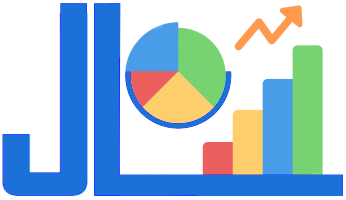SUBJECTS : Computational Science | Built Environment | Urban Modelling | Urban Developmen
LATEST MANUSCRIPTS IN Computational Urban Science
- Mengqiu Cao, Qing Yao, Bingsheng Chen, Yantao Ling, Yuping Hu, Guangxi Xu. Development of a composite regional vulnerability index and its relationship with the impacts of the COVID-19 pandemic. Computational urban science. 2023, 3 (1): 1
 Cited : 1Read More
Cited : 1Read More - Zhe Lin, Gang Li, Muhammad Sajid Mehmood, Qifan Nie, Ziwan Zheng. Spatial analysis and optimization of self-pickup points of a new retail model in the Post-Epidemic Era: the case of Community-Group-Buying in Xi'an City. Computational urban science. 2023, 3 (1): 13
 Cited : 3Read More
Cited : 3Read More - Thomas Johnson, Eiman Kanjo, Kieran Woodward. DigitalExposome: quantifying impact of urban environment on wellbeing using sensor fusion and deep learning. Computational urban science. 2023, 3 (1): 14
 Cited : 6Read More
Cited : 6Read More - Yaxiong Shao, Wei Luo. Enhanced Two-Step Virtual Catchment Area (E2SVCA) model to measure telehealth accessibility. Computational urban science. 2023, 3 (1): 16
 Cited : 0Read More
Cited : 0Read More - Ting-Yu Dai, Praveen Radhakrishnan, Kingsley Nweye, Robert Estrada, Dev Niyogi, Zoltan Nagy. Analyzing the impact of COVID-19 on the electricity demand in Austin, TX using an ensemble-model based counterfactual and 400,000 smart meters. Computational urban science. 2023, 3 (1): 20
 Cited : 5Read More
Cited : 5Read More - Manmeet Singh, Nachiketa Acharya, Sajad Jamshidi, Junfeng Jiao, Zong-Liang Yang, Marc Coudert, Zach Baumer, Dev Niyogi. DownScaleBench for developing and applying a deep learning based urban climate downscaling- first results for high-resolution urban precipitation climatology over Austin, Texas. Computational urban science. 2023, 3 (1): 22
 Cited : 6Read More
Cited : 6Read More - Nemin Wu, Lan Mu. Impact of COVID-19 on online grocery shopping discussion and behavior reflected from Google Trends and geotagged tweets. Computational urban science. 2023, 3 (1): 7
 Cited : 2Read More
Cited : 2Read More - Bingyu Zhao, Jingzhong Li, Bing Xue. Uncovering the spatiotemporal evolution of the service industry based on geo-big-data- a case study on the bath industry in China. Computational urban science. 2023, 3 (1): 9
 Cited : 0Read More
Cited : 0Read More - Xin Xiao, Chaoyang Fang, Hui Lin, Li Liu, Ya Tian, Qinghua He. Exploring spatiotemporal changes in the multi-granularity emotions of people in the city: a case study of Nanchang, China. Computational urban science. 2022, 2 (1): 1
 Cited : 7Read More
Cited : 7Read More - Trupti Lokhande, Xining Yang, Yichun Xie, Katherine Cook, Jianyuan Liang, Shannon LaBelle, Cassidy Meyers. GIS-based classroom management system to support COVID-19 social distance planning. Computational urban science. 2022, 2 (1): 11
 Cited : 3Read More
Cited : 3Read More - Tongxin Chen, Kate Bowers, Di Zhu, Xiaowei Gao, Tao Cheng. Spatio-temporal stratified associations between urban human activities and crime patterns: a case study in San Francisco around the COVID-19 stay-at-home mandate. Computational urban science. 2022, 2 (1): 13
 Cited : 8Read More
Cited : 8Read More - Balamurugan Soundararaj, Christopher Pettit, Oliver Lock. Using Real-Time Dashboards to Monitor the Impact of Disruptive Events on Real Estate Market. Case of COVID-19 Pandemic in Australia. Computational urban science. 2022, 2 (1): 14
 Cited : 5Read More
Cited : 5Read More - Kwun Yip Fung, Zong-Liang Yang, Dev Niyogi. Improving the local climate zone classification with building height, imperviousness, and machine learning for urban models. Computational urban science. 2022, 2 (1): 16
 Cited : 9Read More
Cited : 9Read More - Mingxing Chen, Liangkan Chen, Yang Li, Yue Xian. Developing computable sustainable urbanization science: interdisciplinary perspective. Computational urban science. 2022, 2 (1): 17
 Cited : 4Read More
Cited : 4Read More - Alessandro Crivellari, Bernd Resch. Investigating functional consistency of mobility-related urban zones via motion-driven embedding vectors and local POI-type distributions. Computational urban science. 2022, 2 (1): 19
 Cited : 3Read More
Cited : 3Read More

